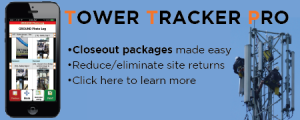Podcast: Play in new window | Download | Embed
Subscribe: Apple Podcasts | RSS
Here it is “The 5G Deployment Plan” available now!
There are two technologies for LTE. For LTE, they have FDD and TDD which both are viable options. Both are viable options. They are both used by carriers in the USA although FDD has been the choice in the past.
There are two technologies for LTE. For LTE, they have FDD and TDD which both are viable options. Both are viable options. They are both used by carriers in the USA although FDD has been the choice in the past.
Sign-up to get all your updates!
Don’t miss an episode on iTunes or Stitcher or Overcast
- What is FDD? FDD – Frequency Division Duplex is something that was used commonly in 3G. It’s paired spectrum with an uplink band and a downlink band in their specific spectrum. For
 1G, 2G, and 3G this was common so you could have a talk and receive channel in the system. There is a guard band in between the transmit band and the receive band. FDD was very popular with GSM and CDMA. It is very difficult to take advantage of MIMO antenna technology in FDD compared to TDD.
1G, 2G, and 3G this was common so you could have a talk and receive channel in the system. There is a guard band in between the transmit band and the receive band. FDD was very popular with GSM and CDMA. It is very difficult to take advantage of MIMO antenna technology in FDD compared to TDD.
- What is TDD? TDD – Time Division Duplex is where there is one large piece if spectrum used for uplink or downlink. Any part or percentage can be assigned to be the uplink or downlink. If you have 20MHz of bandwidth available, then you’re not locked into

10MHz up and 10MHz down like FDD. Instead, you have full control over how much goes up and comes down. The downside that some carriers had been the timing of the spectrum, and it’s higher bands that have this. However, Wi-Fi spectrum is pretty much all TDD, and it works quite well for data. On the other hand, WiMAX used TDD, and it seemed to be taking off but it never fully blossomed and was cast aside for LTE. TDD makes MIMO technology easier to use because it is all in one band.
The Wireless Deployment Handbook Paperback that covers  professional carrier end to end deployment of LTE small cells, CRAN, and DAS.
professional carrier end to end deployment of LTE small cells, CRAN, and DAS.
So, what can LTE do? It can do both, and it does do both. Just not the same equipment. You could have equipment do either LTE-TDD and LTE-FDD. Both are released commercially as well as part of the 3GPP standard. When you look at the deployments, it helps to know which format will be deployed. You see, FDD may need two antennas or a combiner to work on a tower. While TDD is all in the same spectrum and the same antenna is used for transmit and receive. The way that today’s radio heads work it isn’t much of an issue anymore because they can handle the formats quite well. In 2016, you still can’t run them together in the same radio head, although the OEMs are working towards that functionality. Antennas are being designed to run both together by adding more ports and more weight to the antennas.
Note that Wi-Fi is TDD and ZigBee is TDD. Most Bluetooth is TDD. TDD appears to be the choice moving forward. Most 2G and 3G  systems were FDD, and they are being phased out.
systems were FDD, and they are being phased out.
Carriers are learning that when everything becomes truly digital in IP format that it will matter less and less for the BTS but antennas and spectrum efficiency become more important. As of 2016, most of the carriers already have implemented VoLTE into their main networks, all except maybe Sprint who was still relying on CDMA to carry the voice. The carriers know that when they convert VoLTE, it should be the last step to dismantling the 3G networks, saving them money in the long run by retiring 2G and 3G systems.
Sprint is a great example of having both. They have FDD on the CDMA and LTE carriers as well as TDD for their 2.5GHz spectrum of  LTE. They have a huge amount of spectrum in 2.5GHz, over 100MHz of bandwidth. They have successfully deployed on both formats.
LTE. They have a huge amount of spectrum in 2.5GHz, over 100MHz of bandwidth. They have successfully deployed on both formats.
A great resource to learn more can be found at http://electronicdesign.com/communications/what-s-difference-between-fdd-and-tdd at Electronic Design, an article written by Lou Frenzel.
Be smart, be safe, and pay attention!
The foundations below do beautiful work, helping families in their time of need. Climbers often get seriously injured or die on the job. The foundations below support those families in their time of greatest need!
 Hubble Foundation helps the families of climbers in time of need!
Hubble Foundation helps the families of climbers in time of need!
Tower Family Foundation supports the families r tower climbers at the time of crisis when a climber falls.


